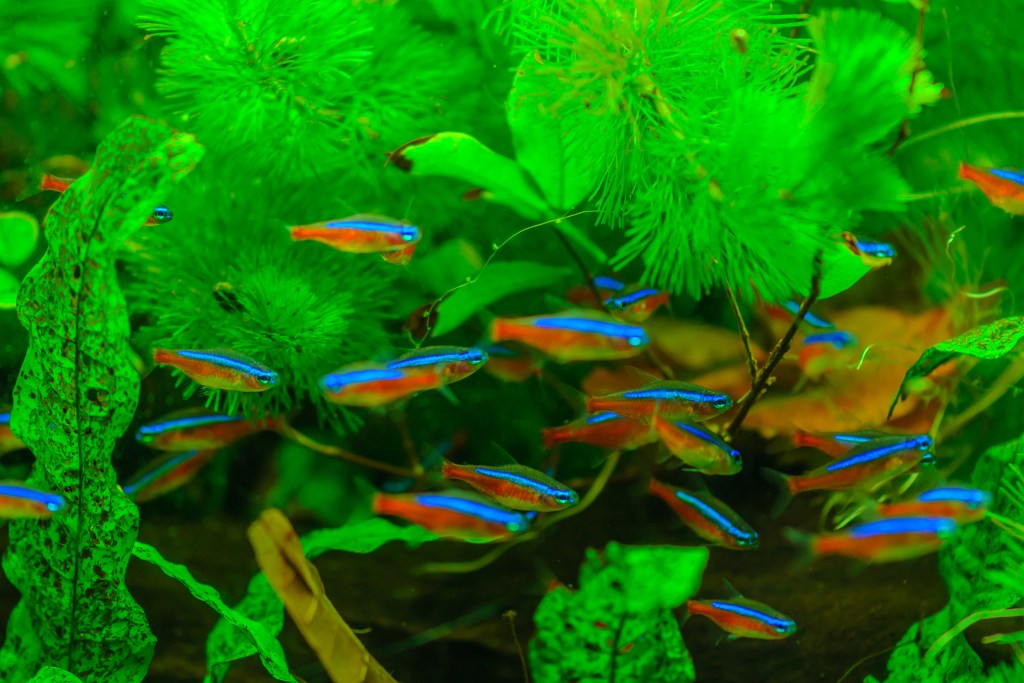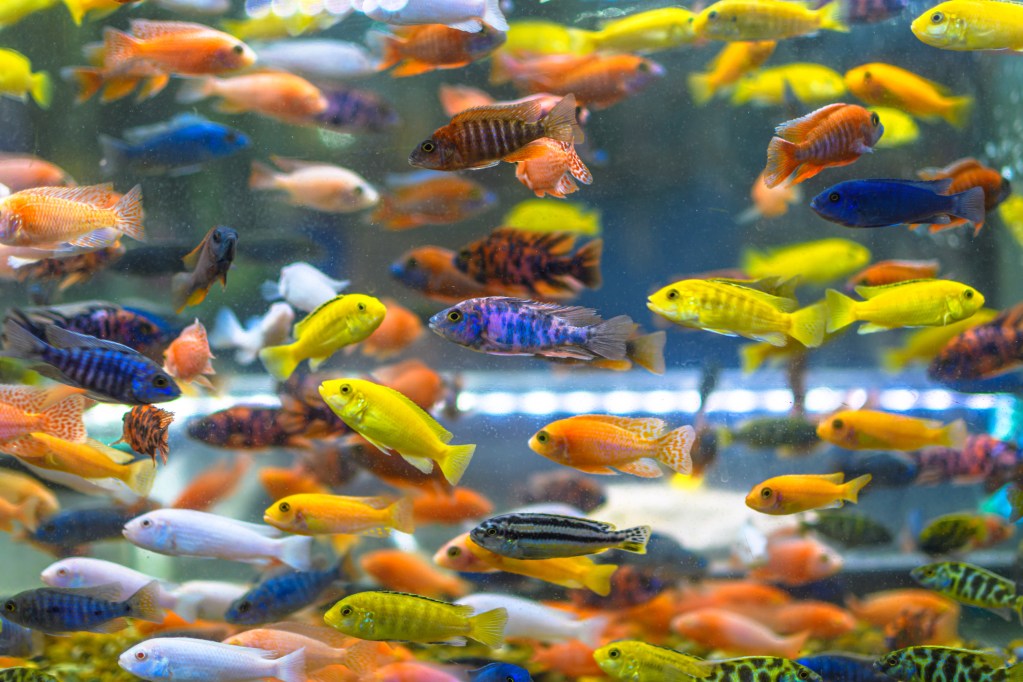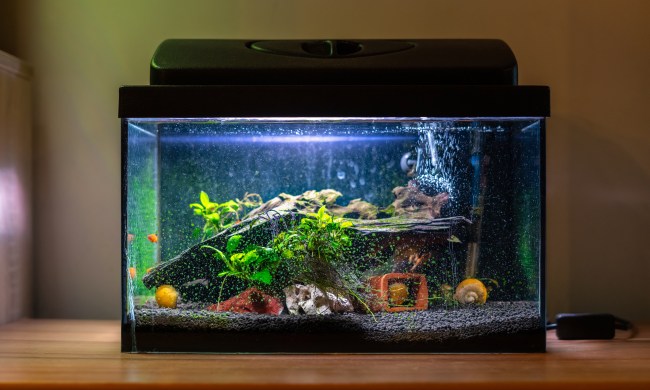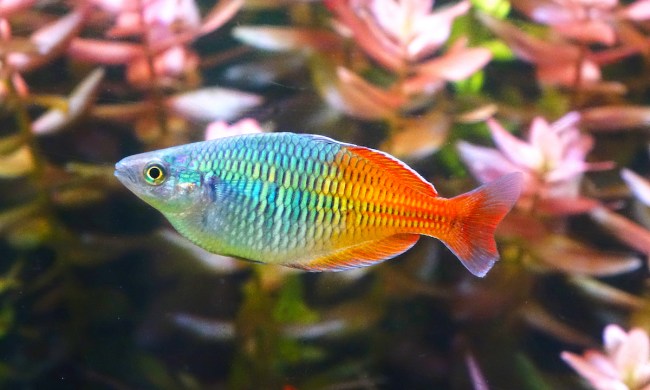Fish often wind up at the top of the best first-pet list. But while lots of swimmers are good for beginners, some species don’t belong on there at all. In fact, many salt-water tanks involve very specialized and dedicated care. If you’re just starting out, you need to stick to the simple ones who will thrive even when their owner forgets to drop in the flakes every now and then. A few, in particular, can help you learn how to care for an aquatic animal without any harm coming to them. If you want to dive into keeping tanks, start with one of these, the easiest fish to take care of.

The easiest fish to take care of
Neon Tetras
These beauties are well known for being hardy and easy to bring into your aquarium. Carefully source your pet because you don’t want to wind up with an illegal wild-caught animal. Instead, seek out one of the 1.5 million that are imported into the U.S. every month. A few good things about neon tetras: they’re colorful, small, and social. You should keep a little school in a tank with other animals. Lastly, don’t bring this tetra into a new tank since they won’t do well while they’re settling in (changes in things like pH and nitrates will hurt them).
Plecos
These little janitors eat up the garbage that no one else wants, like algae and sometimes leftover food. Plus, it’s not too difficult to care for them, but they do require a lot of space – at least a 20-gallon tank. Carefully select tankmates too since you don’t want to introduce a large, predatory beasties to scare away this gentle creature. Lastly, and most fun of all, plecos want extra snacks and you can drop in a few veggies to satiate them. Try spinach, carrots, sweet potatoes, and zucchini once or twice a week.
Guppies
Guppies come in all sorts of colors and sizes, allowing you to pick whatever type you want. You can mix them with other types of water-lovers or create one aquarium just for them. And you might need all the space you can get. This fish reproduces like bunnies and can fill a tank with their babies quickly. Get a big aquarium if you plan to allow this to happen or separate out males and females once they reach maturity (you can spot the boys because they have an extra fin on the bottom). Still, taking care of them will be a breeze and help you gain confidence in your skills.
Danios
Another schooling fish, this excitable species prefers slightly cooler temperatures and so will work well for a newbie who hasn’t graduated to heated tanks yet. They can even live with neon tetras to help get the tank ready. However, danios like to hang out at the surface and you should plan your setup accordingly. Keep a few tall and a few floating plants around for them to enjoy and hide in. While easy to care for, they’re tricky to breed and you might not have much luck raising the babies. For best results, separate the fry right after they hatch.
Goldfish
We’re hesitant to even include this because goldfish really do need certain care to live happily and healthily. First off, don’t bring home a fish you won in the fair if you actually want something that will last. Search out a good local store and examine the animals before bringing him into the fold. Secondly, don’t be fooled by the small goldfish bowls. Remember, these guys can grow to six inches in length and need plenty of room to move about. They also really need a filter because this not-so-little fish produces lots and lots of waste.

Final thoughts on fish for newbies
All fish require hard work and dedication, even the easier breeds. Set up strict feeding and cleaning schedules and stick to them. A dirty tank will quickly spread disease and wind up killing all of the inhabitants. Once you’ve got these guys down, consider trying out needier fish by setting up a saltwater tank. Lastly, even the best aquarist loses a new fish sometimes – don’t despair. Check your chemical levels and try again.



